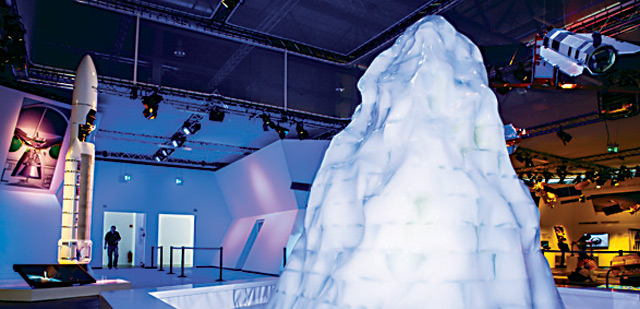The European Space Agency is bringing its CryoSat mission dramatically to life with a cool exhibit featuring an enormous iceberg bathed in brilliant blue light.

Dangling above is a mock-up of ESA's CryoSat-2 satellite, which is used to precisely monitor changes in the thickness of polar sea ice and sheets overlying Greenland and the Antarctica.
As such, the CryoSat mission serves as an index of climate change. Diminishing ice cover reflects global warming and, in turn, influences climate and sea levels. The Intergovernmental Panel on Climate Change says satellite data shows a 2.7% shrinkage in "annual average Arctic sea-ice extent" since 1978. However, data on the trend in ice thickness is required to complete the picture, and here CryoSat-2's role is crucial.
Launched two years ago as a replacement for one lost in 2005, the satellite operates at an altitude of 700km (430 miles) and reaches a latitude of 88˚.
Source: Flight Daily News




















